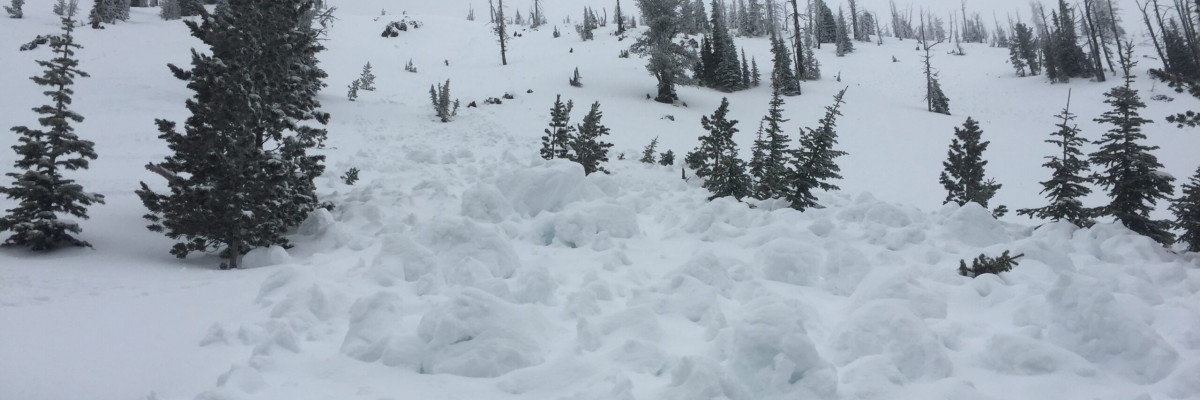The current avalanche danger in the west central Montana backcountry is MODERATE for wind loaded terrain above 6,500ft. Natural avalanches are unlikely but human triggered avalanches are possible in specific terrain. This danger rating does not apply to operating ski areas, expires at midnight tonight and is the sole responsibility of the U.S. Forest Service.
Good morning, this is Logan King with the West Central Montana Avalanche Center’s avalanche advisory for Tuesday, March 1st, 2016.
Weather and Snowpack
Strong westerly winds and light snow have been seen across the advisory area over the last few days. Winds peaked Sunday night and into monday morning with both Deer Mountain and Point Six recording gusts over 50mph. Winds have settled but are still strong, and are currently registering 19mph and gusting to 28mph from the SW. The majority of the advisory area did not see snow overnight with the exception of a trace to an inch near Lost Trail Pass.
Tim and I were in the Rattlesnake yesterday and saw the results of the strong winds over the last few days. Minimal snowfall limited the amount of snow available for transport and slowed the development of windslabs. Windslabs are still the primary concern on leeward terrain above 6500ft. Windslabs are relatively shallow given the winds that have been recorded but are sitting on bed surfaces of crusts on many lee aspects. Careful travel on wind loaded terrain will be essential today.
The secondary avalanche concern today will be loose avalanches. A thin veil of soft snow is sitting on a well-formed crust in many areas and will readily move on steeper terrain (pic). Avoid areas susceptible to loose snow avalanches that also have terrain traps that increase the consequences of getting caught.
Tim and I also observed the debris from old wet slides (pic1) (pic2) that probably occurred mid-week last week. With the mild temperatures that we have been seeing wet slabs may become a problem if warm days also have significant solar radiation warming the snow surface. Stay aware of weather conditions as they change and how they affect the snow.
Avalanche and Weather Outlook
Mild temperatures are expected to persist for the next few days. Light pulses of snow will periodically move through the area with a chance of snow coming tonight as the first wave of moisture passes through. Conditions will most likely remain the same in terms of avalanches unless one of the waves of moisture brings a significant new load or wind loading significantly increases.
The next avalanche advisory will be issued on Thursday.














